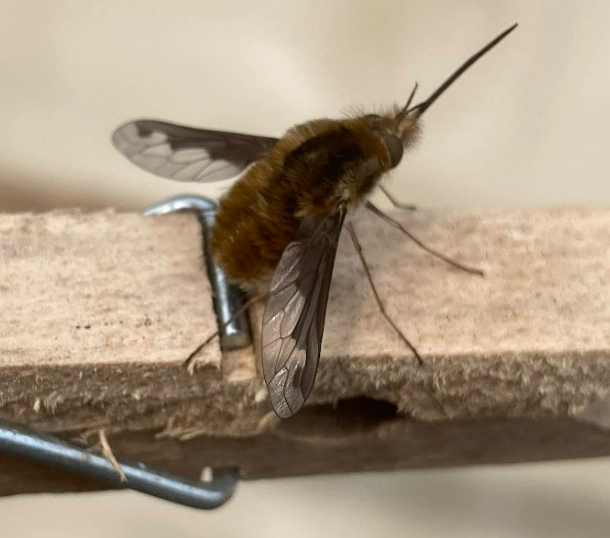|
This striking photograph of a Dark-edged Bee-fly was taken recently by Dick Budden, as it rested on a clothes peg of his washing line. The Dark-edged Bee-fly is the most common of the bee-fly species and can be seen mainly in April and May as it feeds with its long straight proboscis on the nectar from spring flowers in gardens and hedgerows.
It is parasitic in behaviour. The female deposits her eggs into mining bee nesting areas by hovering a few inches above, then giving a sharp twist of her body as she flicks her eggs out with a covering of dust that she’s collected specially for the eggs’ protection. Upon hatching, her larvae will then burrow down and lie in wait to feed on the host bee’s larvae when they mature. You can contribute to Bee-fly Watch on the Dipterists Forum of the Biological Records Centre, where they would welcome accounts of your sightings. Comments are closed.
|
Photo: Avocets (Izzy Fry)
The headers display photos taken by our members. Do get in touch via the Contact Form if you'd like to submit a photo for selection.
Archives
May 2024
Categories
All
|


 RSS Feed
RSS Feed